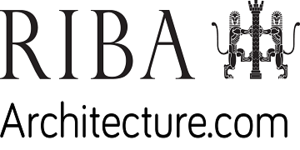Modernism in Britain 1933-66
October 1, 2019–February 1, 2020
Coinciding with the centenary of the Bauhaus school, the Royal Institute of British Architects (RIBA) presents an ambitious exhibition that revisits the impact of three notable Bauhaus émigrés: Walter Gropius, Marcel Breuer and László Moholy-Nagy. Centred on the brief period of 1934-37, when they came to live and work in Britain, the RIBA exhibition traces this fertile moment in British architectural history through the buildings completed during the decade. It considers the ideas they left behind and identifies the areas of post-war British architecture where its legacy has had the most enduring impact.
Chile-based practice Pezo Von Ellrichshausen has designed the exhibition installation, which evokes both the original ethos of the Bauhaus and its current deviations. Instead of a literal translation of the school’s aesthetic, the installation explores a severe sense of order, a kind of rational objectivity, together with a rather oblique presentation of the archival material.
The Bauhaus presence in Britain was profound, championing not merely an architectural style but a philosophy, one based on an understanding of modern materials and technologies, and with a clear sense of social purpose. Drawing on the RIBA’s unique and world-class collections, Beyond Bauhaus examines the exchange between ex-Bauhaus tutors and young British architects, the many modernist influences of the era and the role of a group of pioneering women. Little known and rarely shown works by Elizabeth Denby, Sadie Speight, Margaret Justin Blanco-White, Norah Aiton and Betty Scott demonstrate how important female architects engaged with the ideals of the modernist avant-garde.
The ways in which new ideas were exchanged and disseminated will be presented through correspondence and personal ephemera that illustrate the depth of the personal relationships that flourished between British architects and their European counterparts. Other exhibits will broaden the narrative to show how the Bauhaus was among a number of influences that created a fast moving and highly experimental environment for young modernist architects to practice in.
Spanning 1933–66, this ambitious examination of the impact of émigré architects on Britain will conclude with a reflection on the work of, amongst others, Denys Lasdun, Eric Lyons, and Mary Crowley (later Medd), leading innovators in post-war British architecture whose formative years were spent as junior architects in the pre-war offices of Gropius, Fry, Goldfinger and Coates.
The exhibition will be accompanied by a display of László Moholy-Nagy’s photographic work and films produced during his time in Britain, and by a lively four-month programme of events taking a look at the wider cross-disciplinary impact of the Bauhaus, including talks, film screenings and creative learning workshops.


